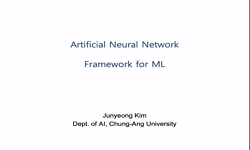플리커는 위치, 시간, 사진 등의 정보를 포함하고 있어 관광 분야에서 활용이 높은 SNS 가운데 하나이다. 플리커 데이터를 활용하여 관광객의 특성을 분석하기 위해서는 플리커에 사진을 업...
http://chineseinput.net/에서 pinyin(병음)방식으로 중국어를 변환할 수 있습니다.
변환된 중국어를 복사하여 사용하시면 됩니다.
- 中文 을 입력하시려면 zhongwen을 입력하시고 space를누르시면됩니다.
- 北京 을 입력하시려면 beijing을 입력하시고 space를 누르시면 됩니다.

경험적 모델과 머신러닝 기법을 활용한 SNS 사용자 분류방법 비교: 플리커 데이터의 관광객 분류방법 = Comparison of Tourists Classification Methods of Geotagged Photos: Empirical Models and Machine Learning Approaches
한글로보기https://www.riss.kr/link?id=A106307964
- 저자
- 발행기관
- 학술지명
- 권호사항
-
발행연도
2019
-
작성언어
Korean
- 주제어
-
등재정보
KCI등재
-
자료형태
학술저널
- 발행기관 URL
-
수록면
29-37(9쪽)
-
KCI 피인용횟수
8
- DOI식별코드
- 제공처
-
0
상세조회 -
0
다운로드
부가정보
국문 초록 (Abstract)
플리커는 위치, 시간, 사진 등의 정보를 포함하고 있어 관광 분야에서 활용이 높은 SNS 가운데 하나이다. 플리커 데이터를 활용하여 관광객의 특성을 분석하기 위해서는 플리커에 사진을 업로드한 사용자 가운데 관광객을 구분하는 것이 필수적이다. 실제 플리커의 메타데이타에는 사용자의 거주지 정보를 기재하게 되어 있지만 정확하게 기재한 사용자의 비율은 40% 미만이다. 본 연구는 플리커 사용자 가운데 관광객과 거주자를 구분하기 위해 경험적 모델과 기계학습 방법을 적용하고, 정확도를 평가하여 어떠한 방법을 사용할지 제안하고자 하였다. 경험적 방법에는 시간적 임계치, 최다 사진 촬영 국가, 최장 체류 국가, 최다 방문 국가를 기준으로 거주국을 추정하는 4가지 방법을, 기계학습 방법에는 로지스틱 회귀, 서포트벡터머신, 의사결정나무, 랜덤포레스트, 인공신경망 모델의 5가지 방법을 적용하였다. 적용 결과 경험적 방법에서는 최장 체류 국가를 기준으로 거주국을 추정하는 방법이, 기계학습 방법에서는 랜덤포레스트 방법이 가장 정확도가 높게 도출되었다. 그러나 관광객 구분에 있어서 정확도뿐 아니라 특이도도 주의 깊게 고려해야 할 항목임을 알 수 있었으며, 연구 목적에 따라 다른 방법이 선택될 수 있음을 제안하였다.
다국어 초록 (Multilingual Abstract)
Flickr is one of the most utilized SNS in the field of tourism because it contains information such as location, time, and photos. In order to analyze the characteristics of tourists using Flickr data, it is essential to identify the tourists among th...
Flickr is one of the most utilized SNS in the field of tourism because it contains information such as location, time, and photos. In order to analyze the characteristics of tourists using Flickr data, it is essential to identify the tourists among the users who uploaded the photos to Flickr. Flicker's metadata is supposed to contain the owner’s location information, but the percentage of users accurately stated is less than 40%. The purpose of this study is to suggest a model which accurately distinguish between tourists and residents after experimenting various models. For empirical models, four methods were used to estimate the country of residence based on the time threshold, the highest photo-taking country, the longest-stay country, and the most visited country. Five machine learning methods are applied: logistic regression, support vector machine, decision tree, random forest, and artificial neural network model. As a result, the method of estimating the country of residence based on the longest stay nation in the empirical method and the random forest method in the machine learning method were found to be the most accurate. However, it was found that not only the accuracy but also the specificity should be considered carefully in the tourist category, and suggested that different methods could be selected according to the research purpose.
참고문헌 (Reference)
1 김나연, "소셜 네트워크 데이터를 활용한 서울방문 관광객의 선호 관광지 시공간 특성 분석" 서울연구원 20 (20): 81-96, 2019
2 Graham, M., "Where in the world are you? Geolocation and language identification in Twitter" 66 (66): 568-578, 2014
3 Paldino, S., "Urban magnetism through the lens of geo-tagged photography" 4 (4): 5-, 2015
4 Önder, I, "Tracing tourists by their digital footprints: The case of Austria" 55 (55): 566-573, 2016
5 Da Rugna, J., "Tourist behavior analysis through geotagged photographies: a method to identify the country of origin" 347-351, 2012
6 Saito, N., "Tourism category classification on image sharing services through estimation of existence of reliable results" 493-496, 2018
7 Barchiesi, D., "Quantifying international travel flows using Flickr" 10 (10): e0128470-, 2015
8 Zheng, Y. T., "Mining travel patterns from geotagged photos" 3 (3): 56-, 2012
9 Kádár, B, "Measuring tourist activities in cities using geotagged photography" 16 (16): 88-104, 2014
10 Girardin, F., "Leveraging explicitly disclosed location information to understand tourist dynamics: a case study" 2 (2): 41-56, 2008
1 김나연, "소셜 네트워크 데이터를 활용한 서울방문 관광객의 선호 관광지 시공간 특성 분석" 서울연구원 20 (20): 81-96, 2019
2 Graham, M., "Where in the world are you? Geolocation and language identification in Twitter" 66 (66): 568-578, 2014
3 Paldino, S., "Urban magnetism through the lens of geo-tagged photography" 4 (4): 5-, 2015
4 Önder, I, "Tracing tourists by their digital footprints: The case of Austria" 55 (55): 566-573, 2016
5 Da Rugna, J., "Tourist behavior analysis through geotagged photographies: a method to identify the country of origin" 347-351, 2012
6 Saito, N., "Tourism category classification on image sharing services through estimation of existence of reliable results" 493-496, 2018
7 Barchiesi, D., "Quantifying international travel flows using Flickr" 10 (10): e0128470-, 2015
8 Zheng, Y. T., "Mining travel patterns from geotagged photos" 3 (3): 56-, 2012
9 Kádár, B, "Measuring tourist activities in cities using geotagged photography" 16 (16): 88-104, 2014
10 Girardin, F., "Leveraging explicitly disclosed location information to understand tourist dynamics: a case study" 2 (2): 41-56, 2008
11 Vu, H. Q., "Exploring the travel behaviors of inbound tourists to Hong Kong using geotagged photos" 46 : 222-232, 2015
12 Liu, Q., "Comparing mobility patterns between residents and visitors using geo‐tagged social media data" 22 (22): 1372-1389, 2018
13 Yuan, Y, "Characterizing international travel behavior from geotagged photos:A case study of flickr" 11 (11): e0154885-, 2016
동일학술지(권/호) 다른 논문
-
관리법의 지도 등의 간행과 기본법의 기본공간정보 취득 관련규정 개선방안
- 대한공간정보학회
- 최병남
- 2019
- KCI등재
-
- 대한공간정보학회
- 김혜진
- 2019
- KCI등재
-
공간 빅데이터를 활용한 서울시 건물부문 온실가스 배출량 공간 분석 연구
- 대한공간정보학회
- 유선철
- 2019
- KCI등재
분석정보
인용정보 인용지수 설명보기
학술지 이력
| 연월일 | 이력구분 | 이력상세 | 등재구분 |
|---|---|---|---|
| 2027 | 평가예정 | 재인증평가 신청대상 (재인증) | |
| 2021-01-01 | 평가 | 등재학술지 유지 (재인증) |  |
| 2019-03-12 | 학술지명변경 | 한글명 : 한국지형공간정보학회지 -> 대한공간정보학회지외국어명 : Journal of The Korea Society For Geospatial Information Science -> journal of Korean Society for Geospatial Information Science |  |
| 2019-01-29 | 학회명변경 | 한글명 : 한국공간정보학회 -> 대한공간정보학회 |  |
| 2018-01-01 | 평가 | 등재학술지 유지 (등재유지) |  |
| 2015-03-30 | 학술지명변경 | 외국어명 : The Korea Society For GeospatIal Information System -> Journal of The Korea Society For Geospatial Information Science |  |
| 2015-01-01 | 평가 | 등재학술지 유지 (등재유지) |  |
| 2013-01-02 | 학술지명변경 | 한글명 : 한국지형공간 정보학회지 -> 한국지형공간정보학회지 |  |
| 2011-01-01 | 평가 | 등재학술지 유지 (등재유지) |  |
| 2010-05-07 | 학회명변경 | 한글명 : 한국GIS학회 -> 한국공간정보학회영문명 : Geographic Information Systems Association Of Korea -> Korea Spatial Information Society (KSIS) |  |
| 2008-01-01 | 평가 | 등재학술지 선정 (등재후보2차) |  |
| 2007-01-01 | 평가 | 등재후보 1차 PASS (등재후보1차) |  |
| 2005-01-01 | 평가 | 등재후보학술지 선정 (신규평가) |  |
학술지 인용정보
| 기준연도 | WOS-KCI 통합IF(2년) | KCIF(2년) | KCIF(3년) |
|---|---|---|---|
| 2016 | 0.83 | 0.83 | 0.72 |
| KCIF(4년) | KCIF(5년) | 중심성지수(3년) | 즉시성지수 |
| 0.63 | 0.61 | 0.947 | 0.12 |




 DBpia
DBpia






